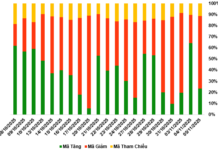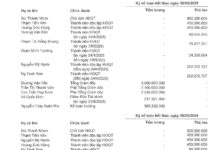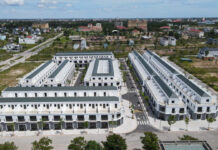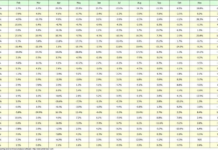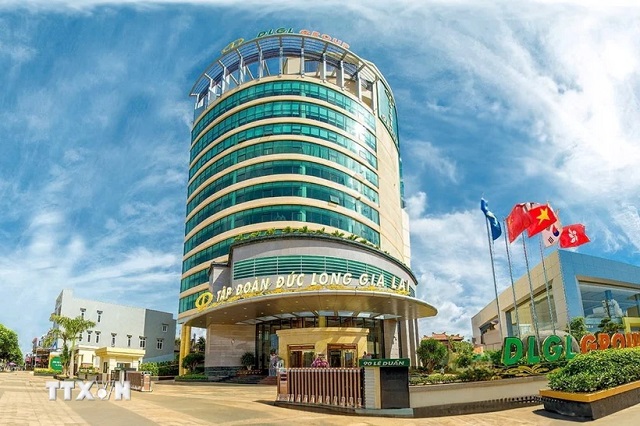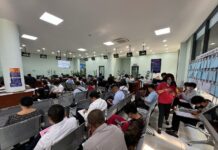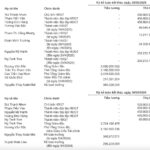 |
Headquarters of Duc Long Gia Lai Joint Stock Group. (Photo: Quang Thai/VNA) |
In Conclusion No. 263/KL-TTCP dated July 19, 2024, on “the inspection of the responsibilities of the People’s Committee in managing and using agricultural land, land from farms and forests; sand, soil, and gravel extraction activities; and investment management in construction projects in Gia Lai Province,” the Government Inspectorate requested the People’s Committee of Gia Lai Province to terminate investment and revoke the Rubber Tree Plantation Project on degraded forest land implemented by Duc Long Gia Lai Joint Stock Group in Chu Puh District.
This project has a total area of 895.5 hectares and was approved for investment in 2011, with the land lease granted by the People’s Committee of Gia Lai Province in 2014. However, by the time of the inspection (January 2022), 11 years later, the company had only completed some investment preparation stages, such as anti-encroachment trench digging, forest protection, temporary housing construction for forest protection, and seedling garden establishment. Notably, the company has not yet planted rubber trees and has not fulfilled its financial obligations to the state, amounting to over VND 13.7 billion.
Additionally, the Government Inspectorate also referred to Notification No. 83/TB-UBND dated September 11, 2017, issued by the People’s Committee of Gia Lai Province, conveying the directive of the Vice Chairman of the People’s Committee to “continue allowing Duc Long Gia Lai Joint Stock Group to implement the project on an area of 209.5 hectares of non-forest land.” For the area of 554.4 hectares of degraded natural forest, the People’s Committee allowed the company to continue leasing the land to manage and protect the existing forest. This directive contradicted the Prime Minister’s directive in Notification No. 191/TB-VPCP and violated the provisions of Clause 1, Article 135 of the 2013 Land Law.
Therefore, the Government Inspectorate requested the People’s Committee of Gia Lai Province to terminate the project, revoke the land in accordance with regulations, and strictly adhere to the Prime Minister’s directive in Notification No. 191/TB-VPCP dated July 22, 2016.
Regarding the Rubber Plantation Project on degraded forest land, the People’s Committee of Gia Lai Province recently submitted a proposal to the Ministry of Agriculture and Rural Development, requesting permission to convert the area of failed rubber trees to other projects, totaling 16,000 hectares of rubber trees (including 12,000 hectares already inspected by the Ministry and an additional 4,000 hectares). According to the Ministry of Agriculture and Rural Development, the conversion of rubber trees to non-forestry crops must comply with the Forest Law. If the purpose of the conversion is to change the type of plantation forest, an equivalent area of forest must be planted as compensation; for natural forests, the compensation area must be three times the size of the converted area.
Previously, to implement the policy of converting degraded forests into rubber plantations, from 2008 to 2011, Gia Lai Province approved 44 projects for 16 enterprises in Chu Prong, Ia Grai, Chu Puh, Duc Co, and Ia Pa districts. These enterprises planted over 25,500 hectares of rubber trees on converted degraded forest land. After more than 10 years of implementation, most of the rubber trees showed stunted growth, died, or were burned.
According to the latest inventory by Gia Lai Province, as of now, the area of rubber trees with normal growth is over 9,000 hectares, the area with poor growth is over 14,000 hectares, and the area of dead rubber trees is nearly 2,500 hectares.
The reason for the death of rubber trees is attributed to unsuitable soil conditions. In the Khop forest, the cultivation layer of soil is about 50cm deep, which is sufficient for the development of rubber tree roots in the first 2-3 years, but in subsequent years, the trees fail to thrive and eventually die.
According to the Forest Ranger Department of Gia Lai Province, with the permission of the Prime Minister and the guidance of the Ministry of Agriculture and Rural Development on crop conversion on the area of failed rubber trees, the province has instructed enterprises to promptly implement the necessary measures. However, after more than 5 years of implementation, no successful conversion model has been established that can be replicated on a larger scale.
Hong Diep


